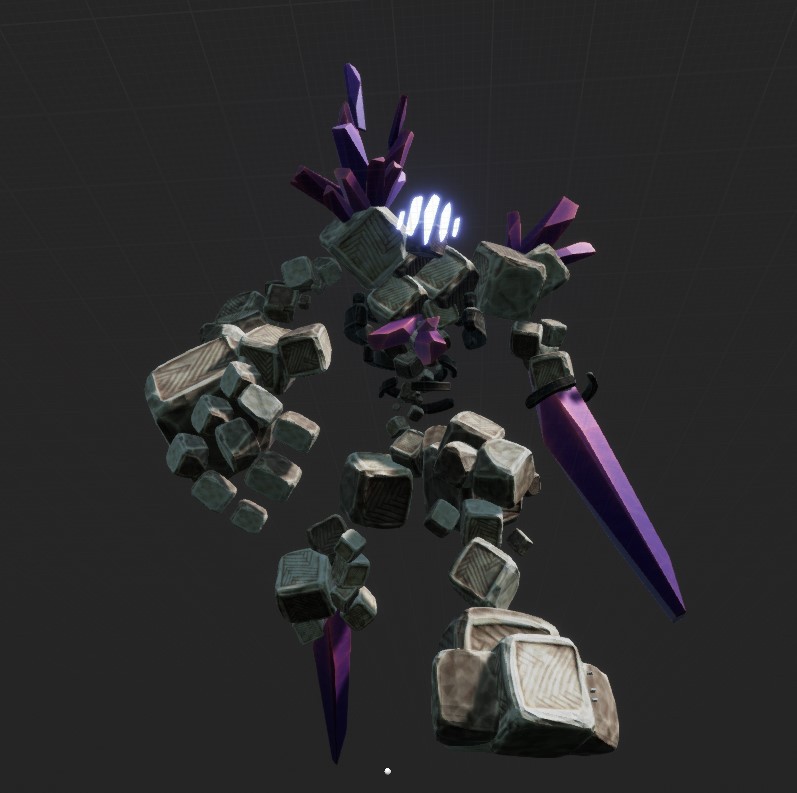Week 14 – Ending Big
With the semester and our second prototype wrapping up, the team realized there was still some work to be done even after Soft Opening. The drive to add more polish and complete the experience we envisioned for the second prototype was strong.
One of the things we wanted to accomplish was making a more complete and fleshed out LSE. As such, our desert rock giant is replaced in our punching prototype with a more magical one created from the ruined detritus of the land:

The inclusion of the environment into it’s form as well as the usage of crystals to amplify the sense of the otherworldly and mystical was important to us.
This visual change in the LSE also allowed us to answer some critiques we received during Soft Opening. Our flying enemies were not as well-received as we hoped, with emphasis concerning how they are tied to the LSE. We redesigned our introduction moment when the LSE forms to showcase the relationship between the two, and have emphasized what triggers the Gravelwings to attack the player. The former makes the experience that much more complete, while the latter shows that the Gravelwings are adhering to the commanding will of the LSE.
Other important tasks, such as the project trailer and our post-mortem, were also completed this week.
Punching Prototype Reflections
As mentioned in earlier blog posts, the second half of this semester really focused on adhering to two main points of feedback we received:
- Focus more on combat
- Take more risks
When it came to Point One, there was a lot we had to consider and also a lot we realized along the way.
Our hookshot prototype had one key moment in which the player can stab the eye of the LSE with their sword. The rest of the time they are using hookshots and climbing routes to swing around and ascend the LSE to get to that moment. The experience acted how we envisioned, but was met with the critique that there was not enough combat, as much of the time was spent navigating and moving.
With the birth of this second prototype, we came to an important conclusion about a key question that hovered over the project:
What is “combat”?
When it comes to dealing with such a large enemy and only using melee attacks, combat does not just deal with hitting. Combat is an all-encompassing term that includes attacking, but also assessing the situation, evading damage, and more. Making the moment when you can actually damage to the LSE directly has to feel earned, because hitting the LSE regularly just doesn’t make sense conceptually and isn’t rewarding.
This is a reason why we continued looking at movement mechanics even though we were told that shouldn’t be our focus. Being able to move well against the LSE is a part of combat.
This leads into Point Two. Going away from the safety of the well-liked hookshots and exploring new methods of locomotion was a risky one. We were setting out into newer territory for all involved. Even the inclusion as something as seemingly innocuous as the flying enemies proved to be a potential determent. However, that is what we set out to do; to explore new aspects of this kind of experience. By doing so, we run a greater risk of failing. But failing isn’t necessarily failing as long as we learn from it.
Although the semester is dwindling to a close, we aren’t totally done. The team plans to present the prototypes to various online communities in order to receive even more insight into giant combat. After applying some polished assets and particle effects we are proud of this second prototype we created.
Below is a shortened version of the video above with some Closed Caption explanations to highlight some thought processes and key moments: